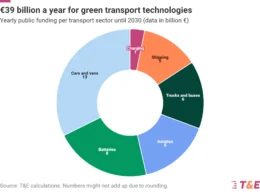The glitter of diamonds and gemstones often conceals a darker reality—one where an estimated one million children work in hazardous conditions in mines, according to the International Labour Organization. The jewellery industry, long associated with human rights challenges such as child labour, forced labour, and unsafe working conditions, now stands at a crossroads. Technological innovations are driving a transformative shift towards transparency, accountability, and sustainability across global supply chains. As the industry confronts its ethical dilemmas, six key technologies are playing a crucial role in reshaping the landscape, but significant barriers still need to be addressed for widespread impact.
Blockchain technology is at the forefront of these innovations, transforming gemstone and diamond supply chains by enhancing transparency and traceability. The digital ledger system enables secure, immutable tracking of gemstones from the point of extraction to the final consumer, ensuring that sourcing remains conflict-free and responsible. Companies like Everledger and De Beers, through its Tracr platform, are leading the charge by creating digital identities for stones that comply with the Kimberley Process, a certification scheme aimed at preventing conflict diamonds from reaching global markets. Blockchain’s capacity to increase transparency aligns with Environmental, Social, and Governance (ESG) priorities, supporting the achievement of the Sustainable Development Goals, particularly SDG 12, which focuses on Responsible Consumption and Production. However, adoption is hindered by high implementation costs and infrastructure requirements that make blockchain inaccessible to many small-scale players and artisanal miners.
While blockchain holds promise for boosting transparency, it is only one piece of the puzzle. Artificial Intelligence (AI) and data analytics are also becoming indispensable tools for detecting human rights risks in gemstone and diamond supply chains. AI-powered platforms can process large volumes of data to identify potential violations, such as forced labour, unsafe working conditions, and illegal mining activities. By enabling early interventions, these technologies help companies to mitigate risks and uphold human rights standards. For example, TDI Sustainability uses AI to monitor high-risk artisanal and small-scale mining sites, a practice that aligns with the evolving European Sustainability Reporting Standards. By analysing real-time data, companies can better manage reputational risks associated with unethical sourcing. Yet, digital literacy challenges persist, as many miners lack the skills required to engage with AI tools effectively. To address this, AI-as-a-service models and capacity-building initiatives could provide affordable and scalable solutions, empowering miners and workers in underserved regions.
Satellite and drone technologies offer innovative approaches to monitoring mining sites, particularly in remote or conflict-prone areas where traditional oversight may be lacking. These tools provide real-time data on the environmental and social impacts of mining activities, helping companies ensure compliance with ethical sourcing practices. In Sierra Leone, for example, satellite monitoring has helped reduce illegal mining activities by 30%, ensuring that diamonds sourced from these regions meet ethical standards. GemFair, an initiative by De Beers, uses mobile technology and satellite imagery to track diamonds from artisanal mining operations, verifying that they meet ethical sourcing criteria. The addition of drone technology further enhances oversight capabilities, allowing companies to detect unsafe working conditions or signs of environmental degradation that might otherwise go unnoticed. The scalability of such technologies is, however, complicated by fragmented supply chains that include multiple intermediaries and geographically dispersed operations. Industry-wide efforts to standardise the collection and sharing of satellite and drone data could simplify the adoption process across the jewellery sector.
The adoption of digital certification technologies is also replacing traditional paper-based systems, offering a more secure and transparent way to verify the ethical sourcing of gemstones and diamonds. Digital certificates document a gemstone’s origin, quality, and compliance, providing accountability across the supply chain. The Gübelin Gem Lab’s Provenance Proof Blockchain exemplifies this approach by creating a tamper-proof record of a gemstone’s journey from mine to market. Such traceability not only supports compliance with SDG 8, which focuses on Decent Work and Economic Growth, but also reassures consumers that they are purchasing ethically sourced, conflict-free gems. Nonetheless, rolling out digital certification systems remains challenging, particularly for smaller operators who may struggle with the associated costs. Providing financial support through subsidies or grants from governments or larger corporations could help offset these expenses, making digital certification more accessible.
Mobile technology is playing a key role in empowering workers in remote mining regions to report human rights abuses, such as forced labour and unsafe conditions. Mobile applications enable workers to submit anonymous complaints, providing companies with real-time data that can be used to address grievances and improve working conditions. The GemFair mobile application allows artisanal miners to report issues, helping to ensure fair compensation and safer work environments. By supporting compliance with the UN Guiding Principles on Business and Human Rights, such technologies are making grievance mechanisms more accessible and effective. However, infrastructure limitations and digital literacy gaps hinder the widespread adoption of mobile grievance mechanisms. Investments in infrastructure and the introduction of digital skills training programmes could play a crucial role in overcoming these barriers, especially in remote mining communities.
Smart contracts, which are integrated with blockchain systems, present another avenue for enhancing ethical compliance within the supply chain. These self-executing contracts automate compliance checks by triggering payments or confirmations when specified ethical standards are met. Companies like Kering are utilising blockchain and smart contracts to track the sourcing of coloured gemstones, adding an automated layer of assurance to the compliance process. Yet, adoption is complicated by interoperability challenges, as different regions and companies may adopt varying blockchain platforms. To facilitate broader adoption, it will be essential for the jewellery industry to develop industry-wide standards that enable seamless integration.
The rise in consumer demand for ethically sourced products and increased investor pressure for robust ESG practices are forcing companies to act. A 2023 survey by the Responsible Jewellery Council found that 67% of consumers are willing to pay a premium for conflict-free and responsibly sourced gemstones, underscoring the growing importance of transparency. As these market dynamics evolve, companies that proactively adopt ethical practices stand to gain a competitive advantage.
Rajesh Chhabara, managing director at CSRWorks International, reflects on blockchain projects in diamond-rich regions like Botswana, where technology has helped mining communities achieve greater transparency in the supply chain. “Implementing ethical sourcing practices is not just a moral imperative; it’s a strategic business advantage,” he notes. “Companies that prioritise human rights protection can enhance their reputation, build stronger stakeholder relationships, and gain access to premium markets where consumers are increasingly demanding transparency and ethical practices. This approach can also help mitigate legal and regulatory risks, leading to more sustainable business growth.” His words resonate across an industry striving to reconcile profitability with responsibility.
While these technologies—blockchain, AI, satellite monitoring, digital certification, mobile applications, and smart contracts—hold considerable promise for addressing human rights issues, their widespread adoption faces significant hurdles. High costs, infrastructure requirements, and limited digital literacy restrict access, particularly for smaller companies and artisanal miners. The fragmented and globally dispersed nature of supply chains adds further complexity, making it difficult to implement scalable solutions consistently. Additionally, resistance to increased transparency, especially from parties with entrenched unethical practices, further complicates efforts to drive change.
To accelerate the adoption of these technologies in the jewellery industry, a multifaceted approach is necessary. Governments, non-governmental organisations, and large corporations can collaborate to provide financial support through subsidies, grants, or financial incentives that help small-scale miners and companies cover implementation costs. Digital literacy training and technology workshops should be prioritised to empower workers and miners to engage with these new tools effectively. Collaborative platforms that standardise data collection and reporting can simplify the management of fragmented supply chains, while ethical certification schemes and premium market access for ethically sourced products can incentivise transparency. Creating clear legal frameworks across regions will also play a critical role in facilitating the consistent application of these innovations.
The jewellery industry is on the verge of a significant transformation, where technology and ethics go hand in hand to create a more sustainable future. By embracing innovations like blockchain, AI, and digital certification, companies can protect human rights and drive systemic change. As a consumer, your choice matters—seek out ethically certified jewellery and support brands committed to responsible sourcing.






















